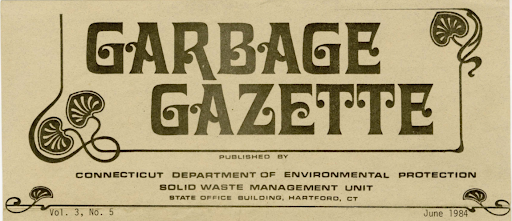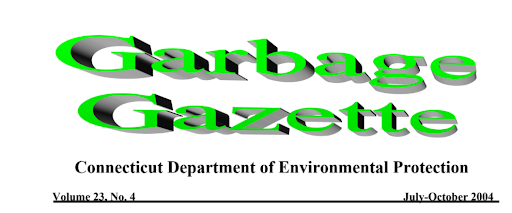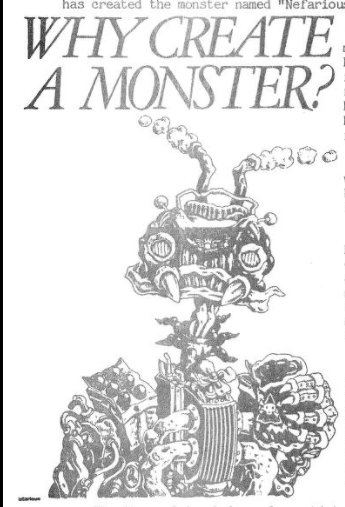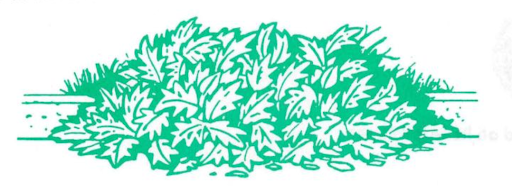To mark the occasion of what would have been James Baldwin’s 94th birthday, we’re going fairly deep into library collections, back to the source of Baldwin’s early works in their original published form in magazines, before they were collected in the books we know today. What follows is a brief introduction to Baldwin’s recent popularity, which no doubt echoes his celebrity in the 1960s, followed by selected images of original Baldwin publications in Shain Library—it’s amazing to think they’ve been here at Connecticut College all along.
The popularity of the work of James Baldwin seems to have grown substantially around the time of the release of the film I Am Not Your Negro (Raoul Peck, 2017) and likely contributed to its success. In August 2017, I went to take a look at a couple of Baldwin’s former apartments in New York City, and one of the current residents told me , “ever since that movie came out, people have been coming by to have a look at the building.” It is not all about the movie, however, as Douglas Field documents a renewed interest in Baldwin starting in the late 1990s, when some of his later and overlooked works began to be reconsidered (Field, James Baldwin 86). Now hardly a week goes by without Baldwin’s name being mentioned in The New York Times newspaper or The New Yorker magazine; an ironic outcome for the author of Nobody Knows My Name (1961). In May, former President Bill Clinton told the New York Times that James Baldwin’s The Fire Next Time is one of the books that “made me want to become a writer.”

James Baldwin lived in an apartment in this building on Horatio Street in Greenwich Village. The building has since been completely gutted and renovated.
In November 2017, Hilton Als of The New Yorker introduced the re-release of Nothing Personal (1964), Baldwin’s collaborative project with photographer and former DeWitt Clinton High School mate Richard Avedon. Two of the latest developments of the Baldwin buzz include the 2018 publication of Magdalena Zaborowska’s Me and My House: James Baldwin’s Last Decade in France, and Michael Eric Dyson’s What Truth Sounds Like: Robert F. Kennedy, James Baldwin, and Our Unfinished Conversation about Race in America. Before these, in 2015 we saw the publication of Ta-Nehisi Coates’s best-selling, Baldwin-inspired book, Between the World and Me.
In his 2017 best-seller, We Were Eight Years in Power, Coates again explicitly states his intention “to try” to write in the vein of James Baldwin (218). It has become customary for those writing about race in America to invoke Baldwin’s legacy, as we see in the example of the powerful collection of essays brought together by Jesmyn Ward, The Fire This Time: A New Generation Speaks about Race (2016). While The Fire Next Time is the go-to starting place for an introduction to Baldwin, there is disagreement about how best to engage his work. Joseph Vogel argues that “no single work by Baldwin is as connected to the issues animating Black Lives Matter as his final nonfiction book, The Evidence of Things Not Seen (1985)”, which was written at a time says Vogel when Baldwin had “lost the public’s affection”.
As part of the recent resurgence, in the fall of 2017 I participated in a reading group at Connecticut College for James Baldwin’s first collection of early essays, Notes of A Native Son (1955). The group was organized by Rose Oliveira, Erin Duran, and Visiting Assistant Professor of French, Benjamin Williams (they also organized a subsequent reading of We Were Eight Years in Power, mentioned above). I was immediately excited to discover in the acknowledgments section of the book that most of the essays in Notes had been previously published in the 1940s and 1950s in magazines that are still available in Shain Library. To be sure, a number of Baldwin’s books, like those of many authors, are indeed collections of previously published work. Curious to see them in their original form, I began tracking them down.
Just as I am Not Your Negro played a part in exposing a new generation to the life and work of James Baldwin, extending it to a wider audience, so too I think it has had the unintended effect of adding another layer between the reader/viewer and the work itself (if such a thing exists), concealing it in a way that is not immediately obvious. There is a world of context — what was happening at the time, where was it published, who were the editors, who were the other contributors, who were the readers, etc. — that is hidden in the form of the original publication that may not be apparent to the reader of a reprint.
FROM NOTES OF A NATIVE SON:
“The Harlem Ghetto,” Baldwin’s first published essay, originally appeared in the February 1948 issue of Commentary. Baldwin-biographer David Leeming calls it Baldwin’s first essay publication, distinguishing it from his book reviews and other early works (Leeming 51). Between 1947 and 1949, when Baldwin was just 22-25 years old (born August 2, 1924), he published an astounding 16 reviews in The Nation and The New Leader (Field, “James Baldwin’s Life” 833). These publications earned him the beginnings of a transatlantic reputation even before he first set foot in France in November 1948.

[Click to enlarge] Commentary, February 1948. Notice the Palmer Library embossment in the upper-left corner, and the corrected typo for the date of publication.

Commentary, February 1948 – table of contents. Notice that then 23-year old Baldwin is already published in the company of New York’s leading intellectuals.

“The Harlem Ghetto” by James Baldwin. Notice the 1948 biographical statement (bottom-left).

Notice the slight annotations in pencil (right column).
When “Everybody’s Protest Novel” appeared in the June 1949 issue of Partisan Review — an attack on “the most famous African American writer [Richard Wright] of his time” and an early mentor (Field, James Baldwin 15) — the young Baldwin was already a “seriously recognized presence on the literary scene” (Leeming 73). Moreover, it was one of the first significant essays by an African American to be published in Partisan Review, impinging directly on the established relation between race and writing at the time (Field, “James Baldwin’s Life” 847).

[Click to enlarge] Partisan Review, June 1949. Unfortunately, the cover was removed in binding so we are left only with the title page. The essay was originally published in Zero magazine (Spring 1949), before appearing in Partisan Review.

Partisan Review, June 1949 – table of contents.

“Everybody’s Protest Novel” by James Baldwin.
“The Negro in Paris” appeared in the June 6, 1950 issue of The Reporter:

[Click to enlarge] The Reporter, June 6, 1950.

The Reporter, June 6, 1950 – table of contents.

“The Negro in Paris” by James Baldwin. Notice the illustrations.


“A Question of Identity” was published in the July-August 1954 issue of Partisan Review:

[Click to enlarge] Partisan Review, July-August 1954.

“A Question of Identity” by James Baldwin.

[Click to enlarge] Checkout cards in the back of this binding could indicate interest in the issue or in Baldwin in particular.

Commentary, January 1955.

Commentary, January 1955 – table of contents.

“Life Straight in De Eye” by James Baldwin. Notice the development of his biographical statement (bottom-left) from the earlier 1948 issue (pictured above).
Beyond the sources listed above that were collected in Notes of a Native Son, there are a number of other compelling, original publications by Baldwin in Shain Library, a few of which are featured below.
OTHER ORIGINAL BALDWIN PUBLICATIONS:

[Click to enlarge] The Nation, April 12, 1947. Baldwin’s first published book review.

The Nation, April 12, 1947 – table of contents. Notice Kay Boyle is a contributor. She is the one who invited Baldwin to speak at Wesleyan University on May 22, 1963.

Kay Boyle’s piece in the same issue as Baldwin’s.

“Maxim Gorki as Artist” by James Baldwin.

“Maxim Gorki as Artist” by James Baldwin.

The ad next to Baldwin’s article.

[Click to enlarge] “Letter From a Region in My Mind” was published in The New Yorker, November 17, 1962, causing the magazine’s sales to soar, before it would become the major portion of The Fire Next Time in 1963. At the time, Baldwin was between continents, between visits to the White House, and a rising star on the international literary scene.

“Letter From a Region in My Mind” by Baldwin in The New Yorker, November 17, 1962.

“Letter to My Nephew” is the other essay that would be collected in The Fire Next Time (1963). Before that, however, it was published in The Progressive, December 1962.

The December 1962 issue of The Progressive marked the centennial of the Emancipation Proclamation, and it included a letter from president John F. Kennedy addressing the occasion.

The Progressive, December 1962 – table of contents.

“Letter to My Nephew” by James Baldwin in The Progressive, December 1962.

In March 1963, Baldwin testified before the House of Representatives with Betty Shabazz, wife of Malcolm X. In his testimony, Baldwin argued that whitewashing American history would deny the black American a sense of identity.

Notice Betty Shabazz’s name is misspelled “Shadazz”.

James Baldwin interview in the Paris Review no. 91 (1984). In the interview Baldwin talks about his early book reviews from the late 1940s.

Beginning of James Baldwin interview in Paris Review (1984).

Architectural Digest, August 1987.

Architectural Digest ran this photographic profile of James Baldwin’s French home alongside a short piece by Baldwin in 1987 shortly before his death. It was his last published work.

Notice here Baldwin uses the now-famous term “transatlantic commuter” to describe his itinerant path.

Architectural Digest, August 1987.

In 1989, artist, printer, and book maker Leonard Baskin made a posthumous illustrated limited edition of selected Baldwin poetry published by his Gehenna Press. The Lear Center for Special Collections and Archives maintains a Leonard Baskin Collection that includes Baldwin’s Gypsy & Other Poems.

Gypsy & Other Poems by James Baldwin.

Gypsy poem by Baldwin.

Checkout card for James Baldwin’s Going to Meet the Man. Obviously the book was pretty popular at Connecticut College.

Checkout card for James Baldwin’s Go Tell It on the Mountain. The book clearly circulated widely on the Connecticut College campus.
WORKS CITED
Field, Douglas. James Baldwin. Tavistock, Devon, UK: Northcote House, 2011.
Field, Douglas. “James Baldwin’s Life on the Left: A Portrait of the Artist as a Young New York Intellectual.” ELH 78.4 (2011): 833-862.
Leeming, David. James Baldwin: A Biography. New York: Knopf, 1994.





































































Recent Comments